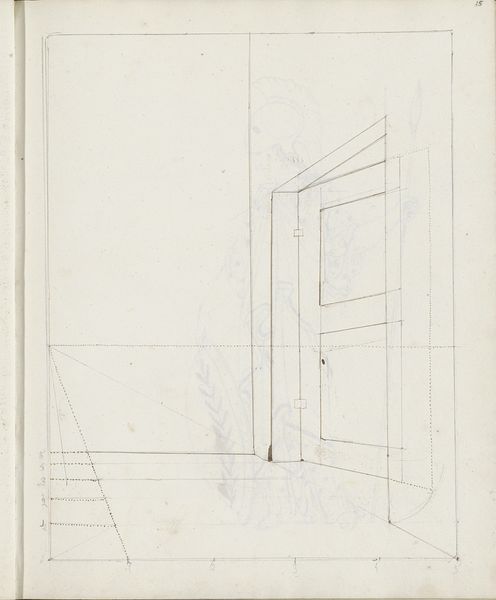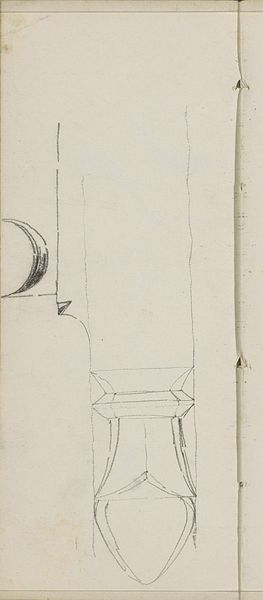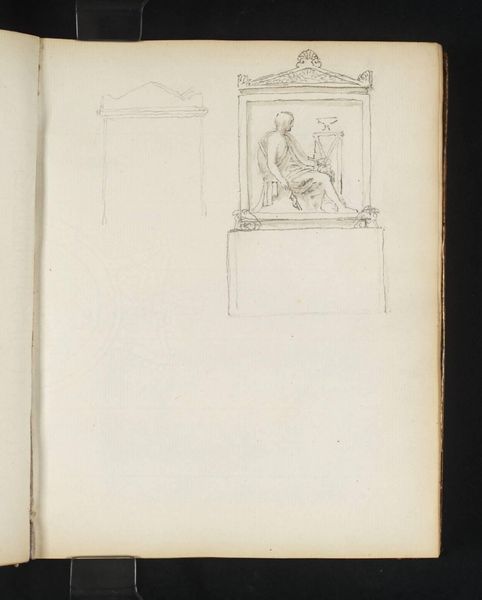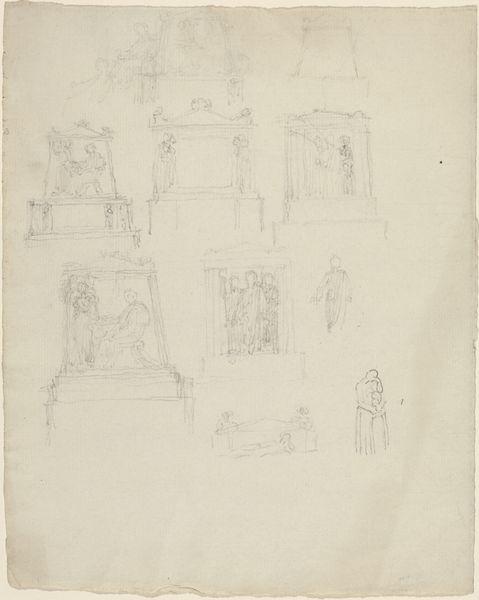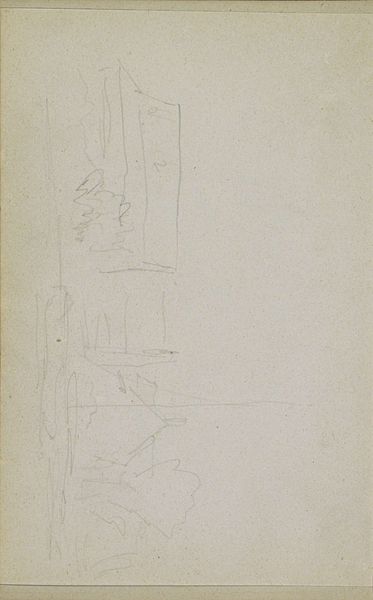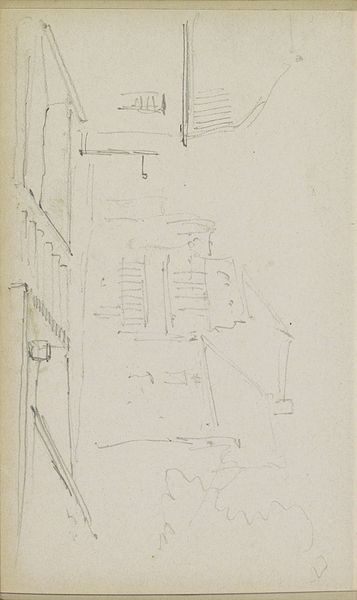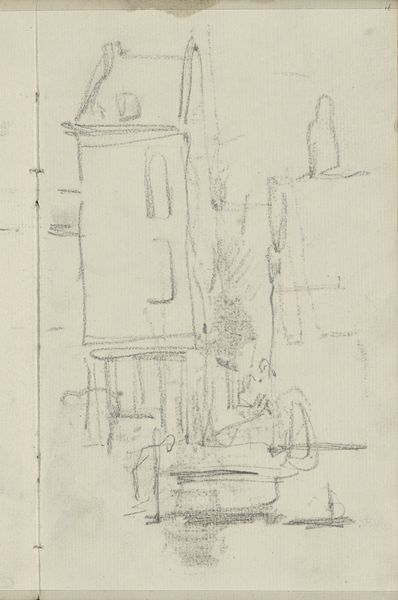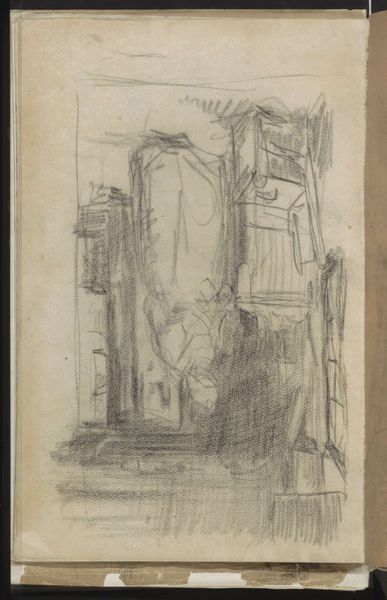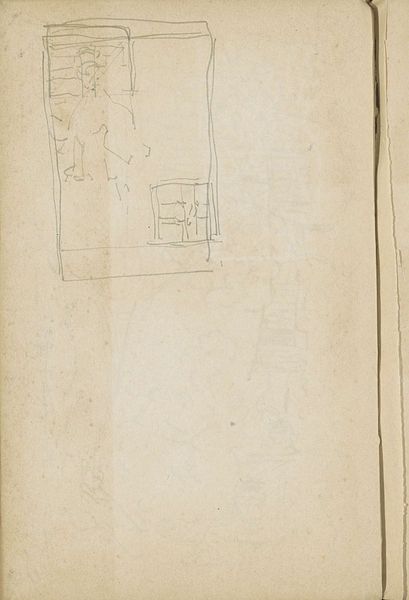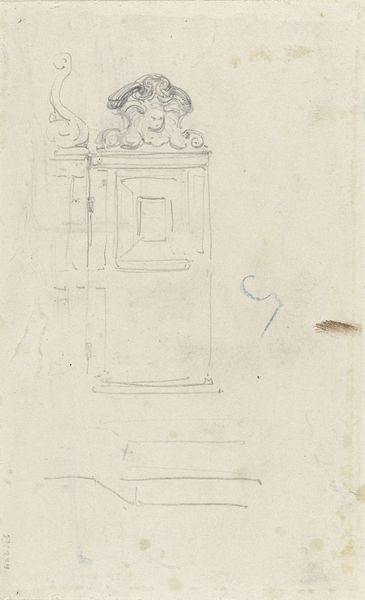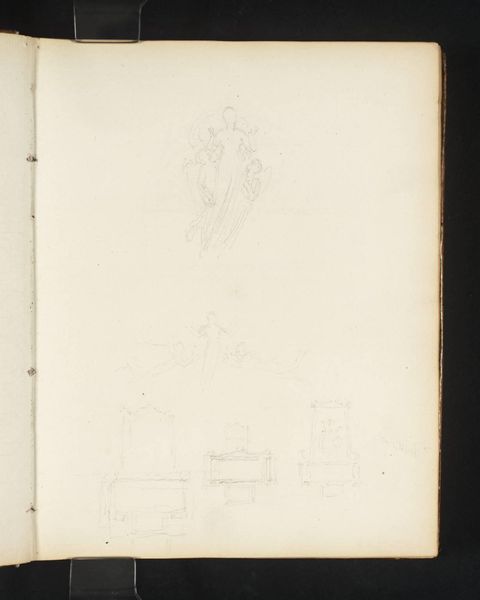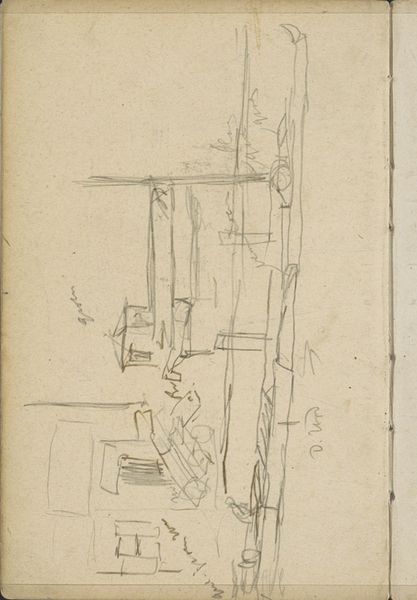
drawing, paper, pencil, architecture
#
drawing
#
paper
#
form
#
geometric
#
pencil
#
line
#
architecture
Copyright: Rijks Museum: Open Domain
Curator: What jumps out at you when you see this sketch? It's a piece called "Lijsten en een decoratieve band" made with pencil on paper by Antoon Derkinderen around 1889 to 1891. Editor: Hmm, a feeling of uncovering something secret. It's so light and airy, yet there's an underlying structure there, you know? Like finding blueprints to a grand but forgotten space. Curator: Interesting, blueprints are exactly what I think of when viewing this work! Given its time, I can't help but situate Derkinderen's emphasis on form within a broader late 19th-century discussion around aesthetic value and design reform. Editor: Right, I mean, there's definitely this sense of precision in the geometric forms. You can feel him working through the composition. Like he's mapping it out. But then that portrait nestled in the decorated panel adds a real touch of mystery. Who is she? Why is she there? Curator: And perhaps how does the representation of this sitter affect the decorative qualities of the frames and banding? One way to think about the use of classical architecture in the context of rising industrialisation, class disparity and social change might be that it evokes both nostalgia and a sense of imagined order, while also presenting this work within a European artistic tradition that centres its sitters and artists as men. Editor: Maybe the simplicity allows room to imagine its presence on a larger, grander scale than this piece suggests. But it’s unfinished—raw. Like a whisper of an idea that's trying to solidify. Curator: Well said. Perhaps by understanding this sketch in its historical moment, we are reminded of architecture’s importance in asserting not only space and aesthetic value, but also of creating social meaning. Editor: Definitely. Makes you wonder what Derkinderen was dreaming of creating. And how these plans connect us back to the cultural ideals and expectations of the late 19th century. Curator: A fascinating conversation we hope the visitor continues long after this audio ends. Editor: Couldn't agree more. May this pencil sketch encourage more curiosity.
Comments
No comments
Be the first to comment and join the conversation on the ultimate creative platform.
